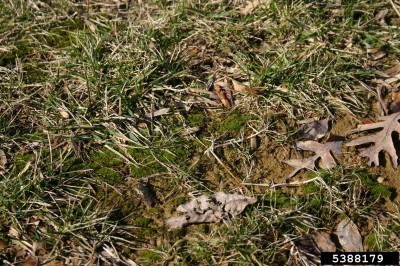






Learning how to get rid of lawn algae in lawns may seem like a daunting task but it really doesn’t have to be. Once you know more about what is lawn algae, this unsightly green to black growth in your lawn can be easily taken care of. Keep reading for tips on controlling algae in grass.
Various types of algae and moss are often found in areas of turf that is not healthy enough to support good turf growth. Algae are small, filamentous plants that create a scum over a moist soil surface.
Algae thrive in areas where there is wet soil and full sunlight. Algae may also be present if the soil is densely compacted, when there are open spots in the turf or a very high fertility present.
Algae forms a black crust when dry, which can often smother turf. Algae can also clog turf pores and cuts the water supply off to the areas of lawn where it is growing. While controlling algae in the grass is not difficult, diagnosis is the first step.
Chemicals are often not necessary to control algae growth. The first step to lawn algae control is to identify the problem areas. Often poor drainage, improperly positioned downspouts on the home or low areas in the lawn create a favorable environment for algae growth.
Redirect downspouts and address other problems with drainage so that water does not sit in certain areas of your lawn. It is also necessary to break apart the algae mat so that the grass can benefit from water.
Take a soil test from healthy areas in the lawn and those that are affected with algae. The soil sample will reveal if you need to apply fertilizer or lime to your lawn. It may also be necessary to loosen up compacted areas in the lawn.
For serious cases of algae, make a mixture of 5 ounces of copper sulfate and 3 gallons of water per 1000 square feet of turf.
Copyright © www.100flowers.win Botanic Garden All Rights Reserved